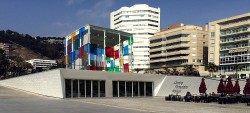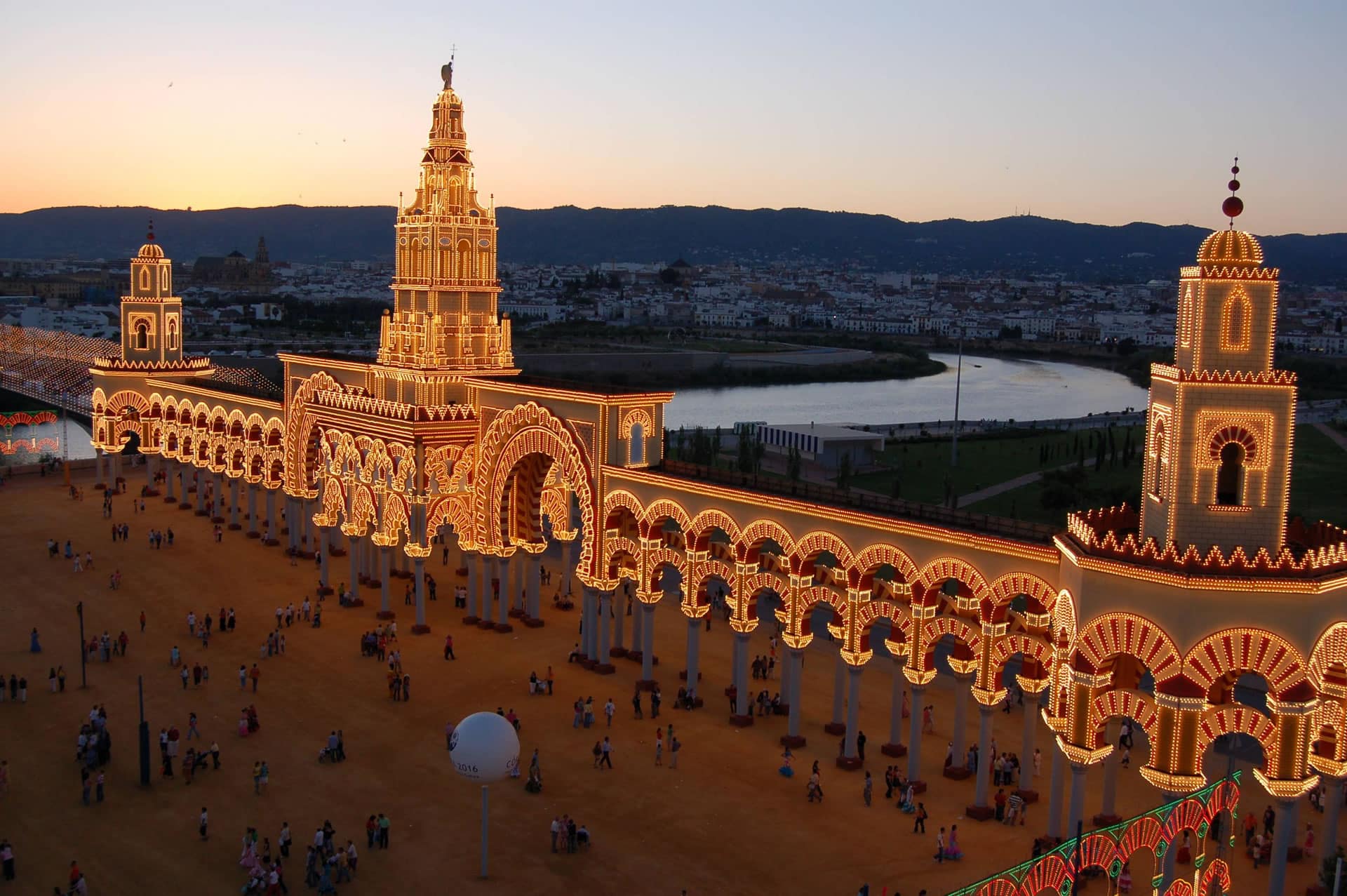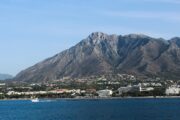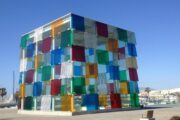 The Pompidou opened in Malaga last March as a new cultural landmark for the capital. The museum features more than 80 works by artists such as Picasso, Giacometti, Magritte, Chagall or Frida Kahlo and is a good attraction for both, children and adults.
The Pompidou opened in Malaga last March as a new cultural landmark for the capital. The museum features more than 80 works by artists such as Picasso, Giacometti, Magritte, Chagall or Frida Kahlo and is a good attraction for both, children and adults.
This is the story of an adventure that begins in February 2008. A chance encounter in the football stadium La Rosaleda between the Mayor of Málaga, Francisco de la Torre, and the then French ambassador, Bruno Delaye, was the trigger for a negotiation process culminating in a corner of the Port of Malaga city, with the opening of the first provisional headquarters outside France Pompidou Centre. French Pompidou is one of the most vibrant cultural centers that exist in Europe, and its funds are home to the largest collection of the old continent modern and contemporary art.
The Pompidou Centre celebrates its first month with almost 30,500 visits. Inaugurated by the Prime Minister, Mariano Rajoy, and the Minister of Culture, Fleur Pellerin, this cultural space opened in “The Cube” at the port, transformed after the intervention of the French conceptual artist Daniel Buren, as a temporary laboratory that will serve to experience and concrete ideas.
Antonio Banderas, Carmen Thyssen and W. Olivier Picasso were few of the important names that attended the opening of the Pompidou too, bringing together the world of culture, business and politics
Centre Pompidou is located at “The Cube” in a privileged corner of Muelle Uno (Málaga city’s port). The Malaga Pompidou now adds to the splendor of Picasso, to the contemporary art of the CAC Málaga and other imported brands such as Thyssen or the newly opened Russian Art Collection St. Petersburg. A magnificent cultural and artistic offer built by big names, unusual in the national and international scene and designed to be a tourist attraction.
Malaga is a subsidiary of the Pompidou living center, which offers, among many activities, a journey through more than 80 pieces by all art disciplines of the XX and XXI centuries, with artists such as Pablo Picasso, Alberto Giacometti, Frida Kahlo, Rene Magritte, Marc Chagall, Rineke Dijkstra, Tony Oursler, Francis Bacon, Max Ernst, Chirico or Sophie Calle.
On an area of 2,000 square meters, in which there is an ongoing encounter between artists of the twentieth century and XXI, the route is divided into five themes: ‘Metamorphosis’,’ Selfportraits’ ‘faceless man,’ The body politic ‘and ‘body into pieces’. Alongside the permanent collection, there will be scheduled two to three temporary exhibitions a year on an area of 363 square meters.
In short, a place that makes special emphasis on young audiences and youth, called to be not only a reference to the Malaga culture, but an example of collaboration between Spain and France.
In this sense, the Pompidou is not to be a mere display of museum collections, but in continuity with the cultural policy of the parent center, and having scheduled short-term activities related to these exhibitions and disciplines such as dance or film. In addition, the Pompidou Centre Malaga aims to new forms of live entertainment and mediation through words by organizing conferences, debates and lectures about the works of the Pompidou.















